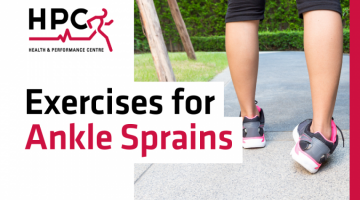Stress Fractures | Guelph Physiotherapy

Stress fractures are tiny cracks that form in the bone typically as a result of overuse or repetitive force. These fractures can occur anywhere, but more commonly in bones of the lower limb, like the tibia or in the feet.
What Causes Stress Fractures?
This type of stress injury is seen in all types of athletes as the amount and intensity of training increases. Typically, the bone can adapt to increased demand through remodelling, but may not be able to keep up when activity ramps up too quickly.
In addition to increased activity, participating in sports that involve high-impact landings, such as gymnastics, basketball and running, increases the risk of stress fractures.
Finally, individuals with flat feet, high arches, osteoporosis, vitamin D or calcium deficiencies, or who have previously experienced stress fractures are also at an increased risk of developing stress fractures.
What are the Signs and Symptoms of Stress Fractures?
The primary symptom of a stress fracture is pain or aching at the site of the fracture. This pain may only be present with the onset of activity and may subside with rest. However, the pain may also persist after the activity ends and continue throughout daily tasks, such as walking.
How are Stress Fractures Diagnosed?
A doctor may be able to diagnose stress fractures from your patient history, however medical imaging is often required to confirm the diagnosis. An X-ray may be requested by your doctor, depending on how long the pain has persisted.
A stress fracture will not always be seen on an X-ray until several weeks after the pain begins. The best way to confirm the presence of a stress fracture is with magnetic resonance imaging (MRI).
Another imaging option is a bone scan. During a bone scan, radioactive dye is injected into the leg. The dye is highly absorbed in areas of the bone that are repairing itself. The affected area will now be more prominent, due to the dye, on an X-ray.
How are Stress Fractures Treated?
It is important to allow the bone to heal sufficiently before returning to regular activity. Since stress fractures are overuse injuries, avoiding any activity that induces pain will prevent it from worsening.
Applying ice and taking anti-inflammatory medication will help reduce pain and swelling. Some nonimpact exercise may be done if it does not cause pain.
Are you experiencing the symptoms of a stress fracture? Our Guelph Physiotherapy team at the Health and Performance Centre is here to support and help you restore your strength, movement, and conditioning safely.
*About the HPC Student Volunteer Program*
Each year, approximately 30 University of Guelph students are selected following a competitive application process to take part in the “HPC Volunteer Program.” This program provides an opportunity for U of G student volunteers to translate their academic knowledge into practice, while gaining first-hand experience and mentorship from the team of certified physiotherapists and chiropractors at the University of Guelph’s Health and Performance Centre. As a result of this exceptional partnership between the University of Guelph and the HPC practitioners, students can gain valuable insight on evidence-based practice prior to graduating from their respective programs. Click here for more information on co-curricular experiential learning opportunities at the University of Guelph. This article was written by members of the 2021-22 HPC Student Volunteer Program.
References
Stress fractures: Causes, symptoms, tests & treatment. (n.d.). Retrieved March 28, 2021, from https://my.clevelandclinic.org/health/diseases/15841-stress-fractures#symptoms-and-causes
Stress fractures. (2019, September 17). Retrieved March 28, 2021, from https://www.mayoclinic.org/diseases-conditions/stress-fractures/diagnosis-treatment/drc-20354063



